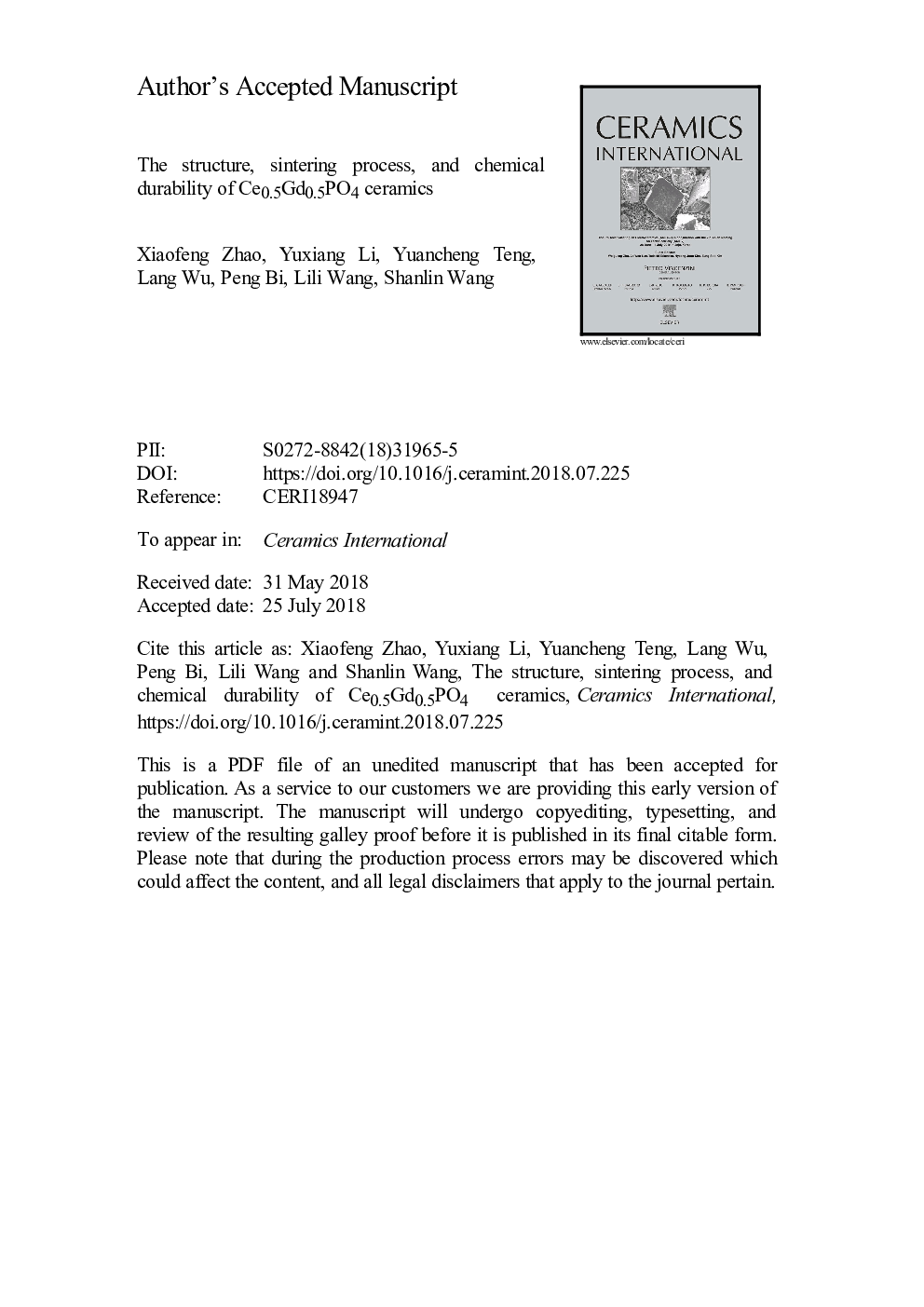| Article ID | Journal | Published Year | Pages | File Type |
|---|---|---|---|---|
| 10155445 | Ceramics International | 2018 | 32 Pages |
Abstract
In this work, Ce0.5Gd0.5PO4 was designed by first principles calculations to investigate the effect of 50% doped Gd on its structural properties. The Ce0.5Gd0.5PO4 ceramics were then prepared via hot-press sintering (HPS) and pressureless sintering (PLS). Their chemical durability was studied to evaluate the leaching resistance of Ce and Gd under leachates along with an examination of the effect of sintering on chemical durability. The results show that the local-density approximation (LDA) plus Hubbard energy (U) is a suitable method to describe the strong spin-orbit coupling of Ce and Gd. The lattice parameters of Ce0.5Gd0.5PO4 match well with experimental values (1.39% error). The structural analysis showed that the lower symmetry of the [GdO9] polyhedron corresponds to its lower defect stability when Gd occupies the Ce sites. For studies of chemical durability, the leach rates of Gd are relatively higher than those of Ce in pHâ¯=â¯3-11 leachates, showing that the [GdO9] polyhedrons with lower symmetry are more easily to be destroyed under leachates. While both Ce0.5Gd0.5PO4 ceramics prepared by HPS (1150â¯Â°C) and PLS (1450â¯Â°C) had high chemical durability in all leachates, the ceramics prepared by PLS had lower leach rates in pHâ¯=â¯3 leachates. This shows that PLS is a better method to prepare Ce0.5Gd0.5PO4 ceramics.
Related Topics
Physical Sciences and Engineering
Materials Science
Ceramics and Composites
Authors
Xiaofeng Zhao, Yuxiang Li, Yuancheng Teng, Lang Wu, Peng Bi, Lili Wang, Shanlin Wang,
